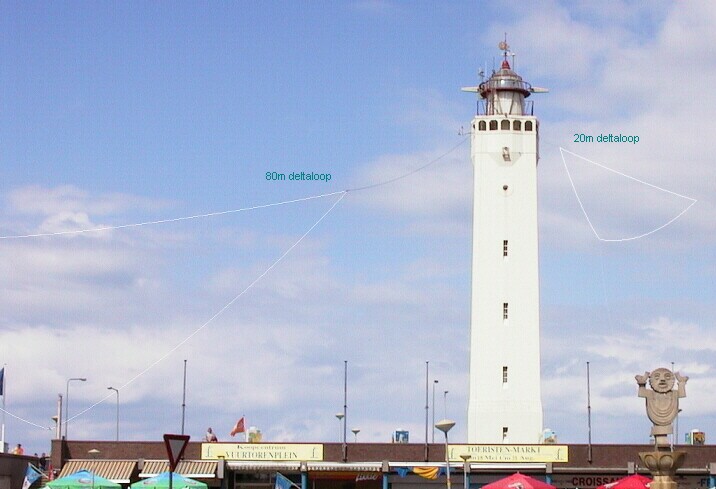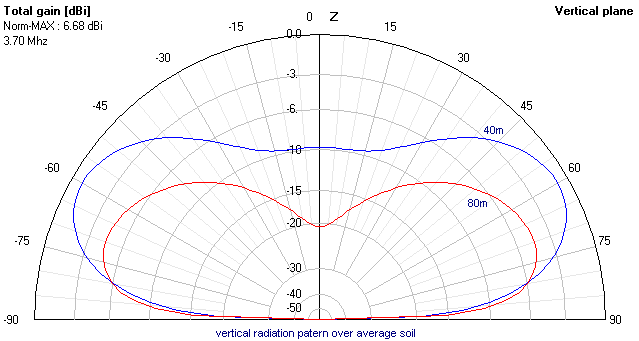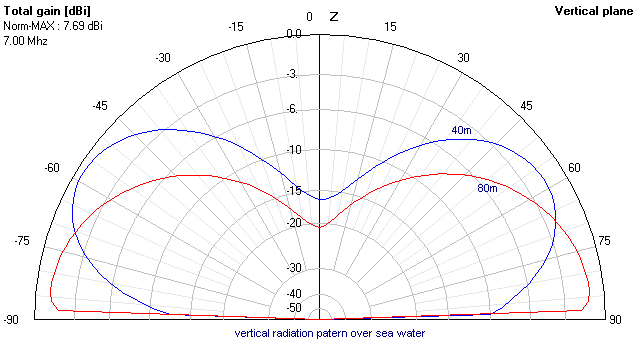 |
| Since
solar activity has dropped considerably over the last year we decided
to put a bit more effort into the lower bands like 40m and 80m . In
close proximity to the sea vertically polarized antennas should work
well for DX. Classic verticals for these bands, however, are rather
impractical. Therefore we used vertically polarised delta loops. The DX
performance of a vertical depends largely on the quality of the ground.
This is because ground reflection hampers low angle radiation up to a
certain angle; the Brewster angle. For average ground the Brewster angle
is about 10 to 15 degrees. But for sea water it is as low as 1 or 2
degrees. The delta loop is simply a triangular full wavelength closed
loop fed at one of the ends of the basis. In our situation the apex of
the triangle was pointing downwards. The shape was designed to give a 50
Ohm impedance at the fundamental frequency. (3.6 MHz on 80m and 14.2 MHz
on 20m) The 80m loop is resonant at almost all the higher amateur
bands. Feed point impedance increases with frequency, but the SWR is
below 1:3 for all bands so we could use an antenna tuner without too
much loss from the coax. There is no need for a balun. Since the antenna is a closed circuit, currents in the inner and outer conductor of the coax are always equal and there is no danger from common mode currents and their interference. We could run both HF rigs simultaneously from the two loops without any problem. When insulated wire is used the circumference of a loop must be close to one wavelength. Keep the length about 5% longer when using blank wire. To obtain pure vertical polarisation the feed point should be a quarter wavelength from the apex. However we decided that a corner of the triangle was more practical and the residual horizontal polarised radiation would benefit local (short distance) contacts. The antennas performed well during the event. for further information contact me at : [email protected] Arend |
 |
 |